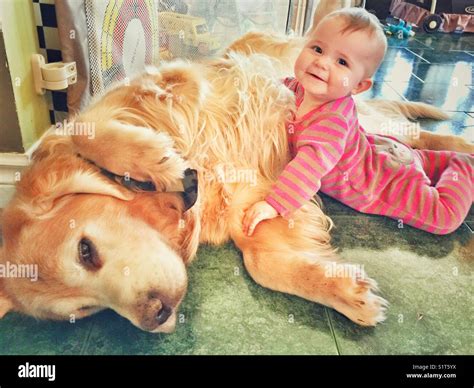
A Shih-Tzu’s bath time routine has captivated the internet, drawing comparisons to the Star Wars character Chewbacca due to the dog’s expressive vocalizations during the process. The now-viral video, showcasing the small dog named Mochi receiving a bath, has garnered millions of views and widespread attention on social media platforms.
Mochi, the diminutive Shih-Tzu, has become an overnight sensation after a video of its bath time was shared online. The video, which quickly spread across various social media platforms, features Mochi seemingly vocalizing its displeasure during the bath, leading viewers to jokingly compare its sounds to those of Chewbacca, the iconic Wookiee from the Star Wars saga. The unexpected comparison and Mochi’s undeniable cuteness have fueled the video’s popularity, turning an ordinary bath time into a viral phenomenon.
The video, originally posted by Mochi’s owner, showcases the dog being gently bathed. Throughout the process, Mochi emits a series of noises that some viewers have interpreted as protests or complaints. It is these sounds, bearing a resemblance to Chewbacca’s characteristic growls and roars, that have sparked the viral trend.
The internet has responded enthusiastically to Mochi’s bath time theatrics. Social media users have shared the video extensively, adding captions, memes, and humorous commentary. Many have praised Mochi’s expressive personality, while others have marveled at the uncanny resemblance to Chewbacca.
The owner of Mochi has expressed surprise and delight at the video’s unexpected popularity. They have also emphasized that Mochi is well-cared for and that the vocalizations are simply part of the dog’s unique personality, not an indication of distress.
The viral video serves as a lighthearted reminder of the internet’s capacity to transform ordinary moments into extraordinary entertainment. It also highlights the enduring appeal of adorable animals and the power of social media to connect people through shared amusement.
The video begins with Mochi already partially wet, its fur clinging to its small frame. As the water is poured over it, Mochi starts to vocalize, producing a series of whines, grumbles, and even what sounds like miniature roars. It’s these sounds, amplified by the small space of the bathroom and the close proximity of the camera, that create the Chewbacca-esque effect.
The video’s charm also stems from Mochi’s facial expressions. The dog’s eyes seem to convey a mix of resignation and mild annoyance, further endearing it to viewers. Despite the apparent vocal objections, Mochi remains relatively still during the bath, suggesting that it is more tolerant of the process than its sounds might indicate.
The comments section of the video is filled with users sharing their amusement and offering their own interpretations of Mochi’s vocalizations. Some users have even created edited versions of the video, adding sound effects or overlaying clips of Chewbacca roaring for comedic effect.
The widespread attention the video has received also underscores the power of animal-related content on the internet. Videos of pets performing amusing actions or exhibiting unique personalities often go viral, attracting large audiences and generating significant engagement. This phenomenon can be attributed to the relatability of pet ownership and the inherent appeal of animals.
Beyond the immediate amusement, Mochi’s viral video also raises some interesting questions about animal behavior and communication. While Mochi’s sounds may resemble Chewbacca’s roars to human ears, they likely serve a different purpose for the dog. Understanding animal vocalizations requires careful observation and consideration of the context in which they occur.
The incident also speaks to the human tendency to anthropomorphize animals, attributing human emotions and motivations to their behavior. While this can be a harmless and even endearing practice, it is important to remember that animals have their own unique ways of experiencing and interacting with the world.
The owner of Mochi has used the video’s popularity to promote responsible pet ownership and to raise awareness about the importance of animal welfare. They have also encouraged viewers to learn more about the specific needs of Shih-Tzus and other small dog breeds.
Shih-Tzus, known for their long, flowing coats and affectionate personalities, require regular grooming to maintain their health and appearance. Bathing is an essential part of this grooming routine, helping to remove dirt, debris, and excess oil from the fur.
However, bathing can also be a stressful experience for some dogs, particularly those who are not accustomed to it. It is important to introduce puppies to bathing gradually and to use positive reinforcement techniques to make the process more enjoyable.
The Mochi video serves as a reminder that every dog is an individual with its own unique personality and preferences. While some dogs may enjoy bath time, others may find it unpleasant. It is the responsibility of pet owners to understand their dog’s needs and to provide them with a safe and comfortable environment.
The impact of the Shih-Tzu’s viral video extends beyond mere entertainment. It has provided a platform for discussions about animal behavior, responsible pet ownership, and the human-animal bond. It has also demonstrated the power of social media to connect people through shared experiences and to amplify important messages.
As Mochi continues to bask in the glow of its newfound fame, its story serves as a testament to the enduring appeal of animals and the internet’s capacity to transform ordinary moments into extraordinary phenomena.
The Mochi phenomenon also highlights a cultural fascination with animals that exhibit human-like qualities. From talking animals in cartoons to pets with expressive faces, humans are often drawn to animals that seem to possess a degree of sentience or self-awareness.
This fascination may stem from a desire to understand the animal kingdom and to bridge the gap between humans and other species. It may also reflect a longing for companionship and connection, which animals are often able to provide in unique and meaningful ways.
The Mochi video also underscores the importance of humor in online culture. The internet is filled with memes, jokes, and humorous content that serve as a form of escapism and social connection. The Mochi video, with its lighthearted tone and unexpected comparison to Chewbacca, fits perfectly into this culture of online humor.
The video’s success can also be attributed to its relatability. Many pet owners can identify with the challenges of bathing their dogs, and they may find Mochi’s vocalizations amusingly familiar. The video provides a shared experience that connects pet owners from around the world.
The Mochi video is not the first example of an animal-related video going viral, and it is unlikely to be the last. The internet is filled with countless videos of cats, dogs, and other animals performing amusing actions or exhibiting unique personalities. These videos often attract large audiences and generate significant engagement, demonstrating the enduring appeal of animal-related content.
The Mochi video also raises some ethical considerations. While the video is undoubtedly amusing, it is important to ensure that Mochi was not subjected to any undue stress or discomfort during the bath. Pet owners should always prioritize the well-being of their animals and avoid actions that could cause them harm or distress.
The Mochi video serves as a reminder that animals are not simply objects of entertainment. They are sentient beings with their own needs and feelings. It is our responsibility to treat them with respect and compassion.
The Mochi video has also sparked a debate about the appropriate use of social media. While social media can be a powerful tool for connecting people and sharing information, it can also be used to exploit or harass others. It is important to use social media responsibly and to avoid posting content that could be harmful or offensive.
The Mochi video, despite its lighthearted tone, raises some important questions about animal welfare, social media ethics, and the human-animal bond. It serves as a reminder that even seemingly trivial online content can have broader implications.
The video’s popularity has also led to an increase in online searches for Shih-Tzu grooming tips. Many people who have seen the video are now interested in learning more about how to properly care for Shih-Tzus and other long-haired dog breeds. This demonstrates the potential of viral videos to educate and inform the public about important topics.
The Mochi video also highlights the importance of creativity and originality in online content. The video’s unexpected comparison to Chewbacca is what made it stand out from the crowd and capture the attention of millions of viewers. This suggests that content creators should strive to be creative and original in order to succeed in the crowded online landscape.
The Mochi video is a testament to the power of the internet to amplify ordinary moments and to connect people through shared experiences. It is also a reminder of the enduring appeal of animals and the importance of responsible pet ownership. As Mochi continues to enjoy its newfound fame, its story serves as a valuable lesson about the power of social media and the importance of treating animals with respect and compassion.
Furthermore, the virality of the “Chewbacca at the Spa!” video brings attention to the Shih-Tzu breed itself. Often chosen for their affectionate nature and adaptability to apartment living, Shih-Tzus require dedicated grooming due to their long, double-layered coats. This includes regular brushing to prevent matting and tangles, as well as routine bathing to maintain hygiene and prevent skin issues. The video inadvertently provides a glimpse into the reality of owning a Shih-Tzu, highlighting the commitment required to keep their coats healthy and looking their best.
The video’s success can also be partially attributed to its timing. In a world often dominated by negative news and serious topics, the lightheartedness and inherent cuteness of the Mochi video provided a welcome distraction for many online users. Its simplicity and universality transcended cultural and linguistic barriers, allowing it to resonate with a wide audience.
Another interesting aspect of the Mochi phenomenon is the role of memes and online humor in shaping its virality. The comparison to Chewbacca instantly transformed the video into meme fodder, with users creating and sharing various adaptations and parodies. This further amplified its reach and solidified its place in internet culture.
The Mochi video also serves as a case study in the power of user-generated content. Unlike professionally produced videos or marketing campaigns, the Mochi video was simply a spontaneous recording of an everyday event. Its authenticity and relatable nature contributed to its appeal and ultimately fueled its viral success.
Moreover, the video’s success underscores the importance of emotional connection in online content. Mochi’s expressive vocalizations and apparent displeasure during the bath evoked a sense of empathy and amusement in viewers, creating an emotional connection that transcended language and cultural differences.
The Mochi video also highlights the ethical considerations surrounding the sharing of animal-related content online. While the video itself appears to be harmless, it raises questions about the potential for exploitation and the need to protect animals from harm or distress. Pet owners should always be mindful of their animals’ well-being when sharing content online and avoid situations that could compromise their safety or comfort.
The Mochi video serves as a reminder that the internet is a constantly evolving landscape, where ordinary moments can be transformed into extraordinary phenomena. Its success demonstrates the power of social media to connect people, amplify messages, and create lasting cultural impact.
The reaction to the Shih-Tzu’s “Chewbacca” performance can also be considered within the broader context of online animal trends. Internet users have long been captivated by animals displaying human-like behaviors or emotions. This tendency to anthropomorphize pets allows for a unique form of engagement, fostering a sense of connection and amusement. In Mochi’s case, the vocalizations during bath time resonated with viewers because they interpreted them as expressions of protest or annoyance, emotions easily relatable to human experiences.
Furthermore, the virality of the video speaks to the power of niche communities on the internet. Dog lovers, Star Wars fans, and meme enthusiasts all contributed to the widespread sharing and adoption of the “Chewbacca at the Spa!” video. The convergence of these different online communities amplified the video’s reach and solidified its viral status.
The video also serves as a reminder of the importance of responsible pet ownership in the digital age. While it’s tempting to share every aspect of our pets’ lives online, it’s crucial to prioritize their well-being and avoid situations that could cause them stress or discomfort. In Mochi’s case, the owner has assured viewers that the dog is well-cared for and that the vocalizations are simply part of its unique personality. This transparency is essential for maintaining ethical standards in online animal content.
The Mochi video’s success also highlights the role of algorithms in shaping online trends. Social media platforms use algorithms to determine which content is shown to users, and these algorithms often prioritize content that is engaging, shareable, and emotionally resonant. The Mochi video ticked all of these boxes, leading to its widespread distribution and viral success.
The video’s impact extends beyond mere entertainment, prompting discussions about breed-specific grooming requirements, the challenges of bathing small dogs, and the ethical considerations of sharing animal-related content online. It serves as a reminder that even seemingly trivial online trends can have broader implications for animal welfare and online culture.
Finally, the “Chewbacca at the Spa!” video exemplifies the power of humor to connect people and transcend cultural boundaries. The unexpected comparison to a beloved Star Wars character resonated with viewers around the world, providing a lighthearted moment of levity in a world often dominated by serious news and challenges. The video’s success is a testament to the enduring appeal of humor and its ability to bring people together.
Frequently Asked Questions (FAQ)
-
What is the main reason the Shih-Tzu’s bath time video went viral?
- The video went viral primarily because the Shih-Tzu’s vocalizations during the bath resembled the sounds of Chewbacca from Star Wars, creating a humorous and unexpected comparison that resonated with viewers.
-
Is the Shih-Tzu in distress during the bath, according to the owner?
- No, the owner has stated that the Shih-Tzu is well-cared for and that the vocalizations are simply part of the dog’s unique personality, not an indication of distress.
-
What breed is the dog in the video and what are some specific care requirements for that breed?
- The dog in the video is a Shih-Tzu. Shih-Tzus require regular grooming, including frequent brushing to prevent matting and tangles, as well as routine bathing to maintain hygiene and prevent skin issues.
-
What are some ethical considerations when posting animal videos online?
- Ethical considerations include ensuring the animal’s well-being and avoiding situations that could cause them stress, harm, or discomfort. It’s important to avoid exploitation and prioritize the animal’s safety and comfort over viral fame.
-
How does this video reflect the broader trends of animal-related content on the internet?
- The video reflects the broader trend of internet users being captivated by animals displaying human-like behaviors or emotions. This tendency to anthropomorphize pets allows for a unique form of engagement, fostering a sense of connection and amusement, contributing to the virality of animal-related content.









